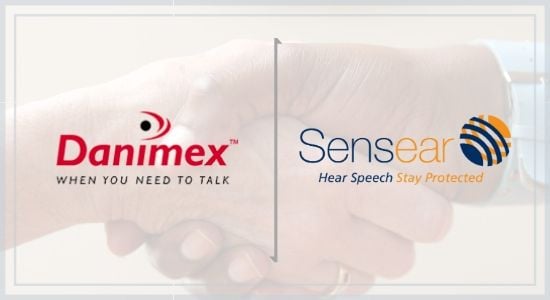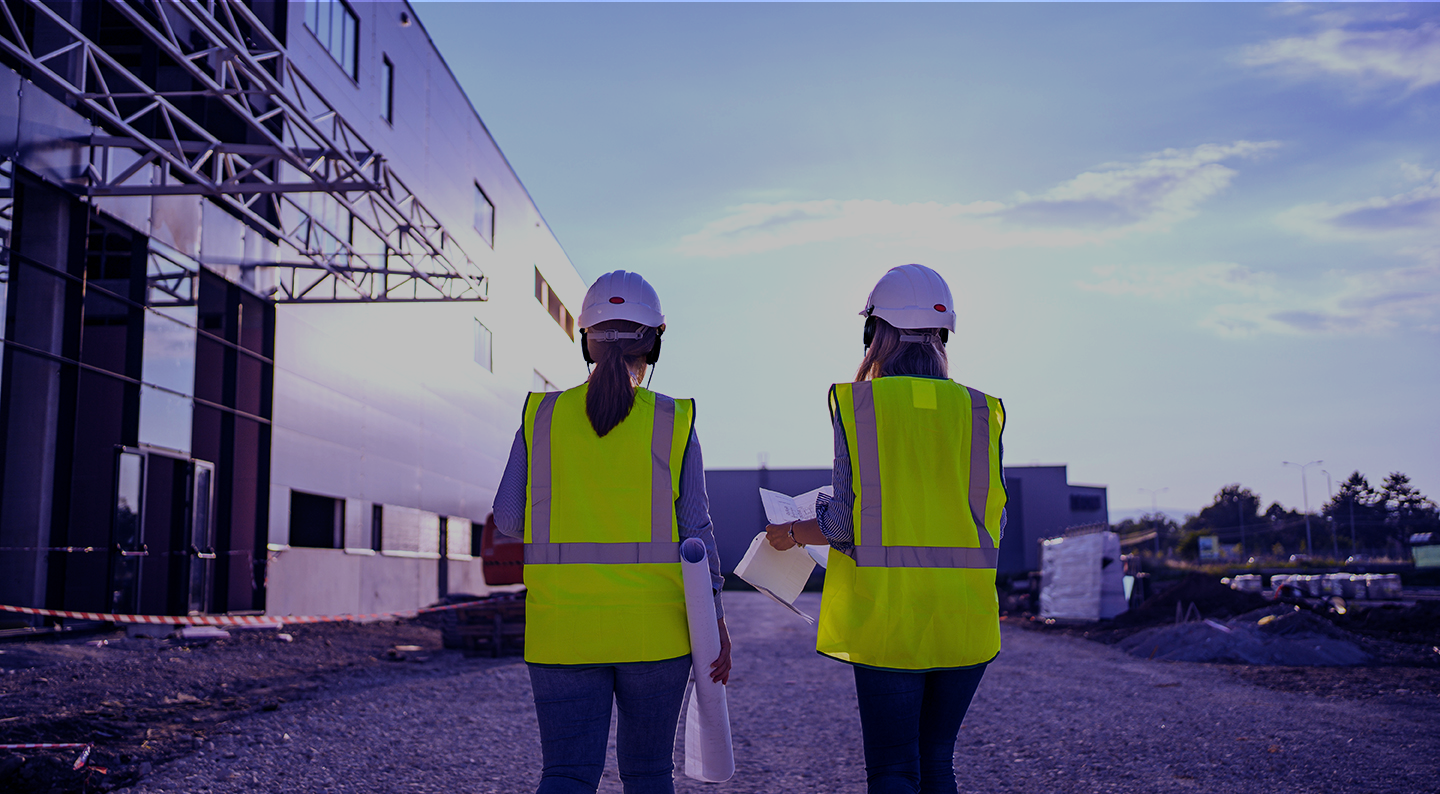VIEW BY CATEGORY
View All Blogs

- Hearing Protection
- High-Noise Workplace Safety
- High-Noise Communication
- Noise-Induced Hearing Loss
- Sensear Technology
- Hazardous Locations / Intrinsic Safety
- Bluetooth® / Wireless Communication
- Situational Awareness
- Noise Suppression
- Two-Way Radio Communication
- Tours and Training
- Double Hearing Protection
- Sensear News
- Hearing Protection Headsets
- Headset Maintenance
- Hearing Protection for Workers
- Noise Reduction headset
- Noise-Canceling Communication Headsets
- OSHA Hearing Protection Standards
- Occupational Hearing Protection
- SENS® Technology for Hearing Protection
- 360° Situational Awareness
- Headsets for Dangerous Work Environments
- Headsets for Loud Machinery
- Health and Safety in Industrial Workplaces
- Hearing Protection Equipment for Workers
- Hearing Protection in Industrial Workplaces
- High-Noise Environments
- Industrial Communication Solutions
- Industrial Headsets for Safety
- Industrial Noise Protection
- Noise-Induced Hearing Loss Prevention
- Safety Headsets for Noisy Environments
- Workplace Safety with Headsets
- AI Data Centers
- ATEX Certified Headsets
- Aircraft ground crew communication
- Airport Ground Support Safety
- Airport ground crew headsets
- Aviation industry safety solutions
- Baggage handler headsets
- Battery-Powered Two-Way Radio Headsets
- Bluetooth Headsets for Communication
- CSA Certified Headsets
- Clear Communication in Hazardous Zones
- Clear communication in noisy environments
- Construction Communication Headsets
- Construction Safety Equipment
- Construction Worker Safety
- Data Center Noise Reduction
- Data Center Productivity
- Data Center Safety
- De-icing crew communication
- Dual hearing protection
- Explosion Proof Communication Equipment
- Explosion-Proof Headsets
- Ground support equipment noise
- Hazardous Environments
- Hazardous Location Communication
- Hazardous Noise
- Hearing Protection Solutions
- Hearing Protection for Manufacturing
- High-Performance Headsets
- High-noise manufacturing environments
- IECEx Certified Headsets
- Industrial Noise-Canceling Headsets
- Industrial Radio Headsets Compatibility
- Industrial Safety
- Intrinsically Safe Headsets
- Long Battery Life Radio Headsets
- Manufacturing safety solutions
- Manufacturing worker safety gear
- Noise Cancelling Ear Protection
- Noise exposure in manufacturing
- Occupational Health and Safety
- Occupational hearing loss prevention
- Personal Protective Equipment (PPE)
- Preventing hearing damage in manufacturing
- Protecting workers' hearing
- Respiratory Protection
- Road Construction
- SENS Technology
- Safety Gear for Hazardous Locations
- Sensear Headsets
- Situational Awareness in Data Centers
- Situational awareness in Manufacturing
- Smart Earplugs vs. Smart Headsets
- Two-Way Radio Headsets
- UL Certified Headsets
- Worker Safety
- Workplace Safety
December 10, 2025 |
Hearing Protection
National Why a Year-End Checkup Matters For many industrial sites, noise exposure and...
READ MORE
September 30, 2025 |
Hearing Protection
Expert Insight from Sensear In today’s industrial environments, outdated practices like derating...
READ MORE
August 8, 2025 |
Noise-Induced Hearing Loss
In industries where employees are exposed to hazardous substances or extreme working conditions, ...
READ MORE
May 28, 2025 |
Noise-Induced Hearing Loss
Noise-induced hearing loss (NIHL) is a significant occupational health issue affecting millions of...
READ MORE
February 18, 2025 |
Noise-Induced Hearing Loss
Road construction is one of the most hazardous work environments, with many workers focused on...
READ MORE
December 18, 2024 |
Hearing Protection
In industries with high levels of occupational noise exposure—such as mining, oil & gas, ...
READ MORE
November 4, 2024 |
Hearing Protection
According to the National Library of Medicine, over 600 million workers are exposed to noise levels...
READ MORE
October 24, 2024 |
Hearing Protection
Hearing protection is more important than ever as hearing loss is now the third leading chronic...
READ MORE
August 4, 2023 |
Hearing Protection
The early days of the oil and gas industry were characterized by rapid growth, advancements in...
READ MORE
Noise is an inevitable part of the power and utilities industry. The constant hum of turbines, the...
READ MORE
October 18, 2022 |
Noise-Induced Hearing Loss
Mining presents many risks to all involved, from the financial and investment level, down to the...
READ MORE
October 6, 2022 |
Hearing Protection
The steel industry is one of the largest global industries in the world, employing over 6 million...
READ MORE
September 15, 2022 |
Hearing Protection
“What?! What did you say?! I can’t hear you!” Is this a typical occurrence in your oil or gas...
READ MORE
February 23, 2022 |
Hearing Protection
Loud-noise exposure can have a wide range of detrimental effects in your workplace. These loud...
READ MORE
September 22, 2021 |
Hearing Protection
Wrong. Based on research found by us at Sensear, the average noise level around the server areas of...
READ MORE
Blog Spotlight
Blog Categories
- Hearing Protection (43)
- High-Noise Workplace Safety (38)
- High-Noise Communication (34)
- Noise-Induced Hearing Loss (29)
- Sensear Technology (23)
- Hazardous Locations / Intrinsic Safety (21)
- Bluetooth® / Wireless Communication (16)
- Situational Awareness (12)
- Noise Suppression (11)
- Two-Way Radio Communication (7)
- Tours and Training (6)
- Double Hearing Protection (5)
- Sensear News (5)
- Hearing Protection Headsets (4)
- Headset Maintenance (3)
- Hearing Protection for Workers (3)
- Noise Reduction headset (3)
- Noise-Canceling Communication Headsets (3)
- OSHA Hearing Protection Standards (3)
- Occupational Hearing Protection (3)
- SENS® Technology for Hearing Protection (3)
- 360° Situational Awareness (2)
- Headsets for Dangerous Work Environments (2)
- Headsets for Loud Machinery (2)
- Health and Safety in Industrial Workplaces (2)
- Hearing Protection Equipment for Workers (2)
- Hearing Protection in Industrial Workplaces (2)
- High-Noise Environments (2)
- Industrial Communication Solutions (2)
- Industrial Headsets for Safety (2)
- Industrial Noise Protection (2)
- Noise-Induced Hearing Loss Prevention (2)
- Safety Headsets for Noisy Environments (2)
- Workplace Safety with Headsets (2)
- AI Data Centers (1)
- ATEX Certified Headsets (1)
- Aircraft ground crew communication (1)
- Airport Ground Support Safety (1)
- Airport ground crew headsets (1)
- Aviation industry safety solutions (1)
- Baggage handler headsets (1)
- Battery-Powered Two-Way Radio Headsets (1)
- Bluetooth Headsets for Communication (1)
- CSA Certified Headsets (1)
- Clear Communication in Hazardous Zones (1)
- Clear communication in noisy environments (1)
- Construction Communication Headsets (1)
- Construction Safety Equipment (1)
- Construction Worker Safety (1)
- Data Center Noise Reduction (1)
- Data Center Productivity (1)
- Data Center Safety (1)
- De-icing crew communication (1)
- Dual hearing protection (1)
- Explosion Proof Communication Equipment (1)
- Explosion-Proof Headsets (1)
- Ground support equipment noise (1)
- Hazardous Environments (1)
- Hazardous Location Communication (1)
- Hazardous Noise (1)
- Hearing Protection Solutions (1)
- Hearing Protection for Manufacturing (1)
- High-Performance Headsets (1)
- High-noise manufacturing environments (1)
- IECEx Certified Headsets (1)
- Industrial Noise-Canceling Headsets (1)
- Industrial Radio Headsets Compatibility (1)
- Industrial Safety (1)
- Intrinsically Safe Headsets (1)
- Long Battery Life Radio Headsets (1)
- Manufacturing safety solutions (1)
- Manufacturing worker safety gear (1)
- Noise Cancelling Ear Protection (1)
- Noise exposure in manufacturing (1)
- Occupational Health and Safety (1)
- Occupational hearing loss prevention (1)
- Personal Protective Equipment (PPE) (1)
- Preventing hearing damage in manufacturing (1)
- Protecting workers' hearing (1)
- Respiratory Protection (1)
- Road Construction (1)
- SENS Technology (1)
- Safety Gear for Hazardous Locations (1)
- Sensear Headsets (1)
- Situational Awareness in Data Centers (1)
- Situational awareness in Manufacturing (1)
- Smart Earplugs vs. Smart Headsets (1)
- Two-Way Radio Headsets (1)
- UL Certified Headsets (1)
- Worker Safety (1)
- Workplace Safety (1)

Sensear and Danimex Announces Distribution Agreement
Danimex Communication and Sensear have formed a new partnership to market Sensear’s products in Middle East, Africa, Benelux and the Scandinavian Countries.

